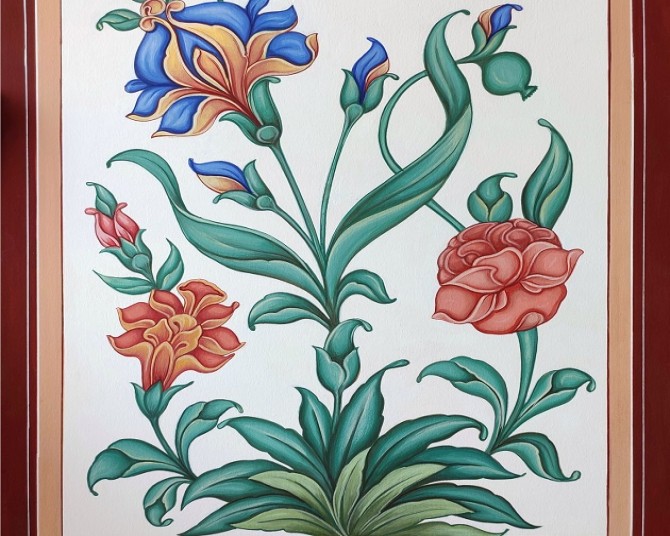
Introduction
Mohrakashi is a fresco tradition indigenous to Punjab that gained prominence under the patronage of Maharaja Ranjit Singh in the 19th Century. The development of Mohrakashi through this period gave rise to the Sikh School of Art, with frescoes dominated by floral and foliage designs with influence from the Kangra School of Art. Across Punjab Mohrakashi frescoes adorn Gurudwara, Temples, Cenotaphs, Havelis, Dharamshalas & Ankharas (places of learning).
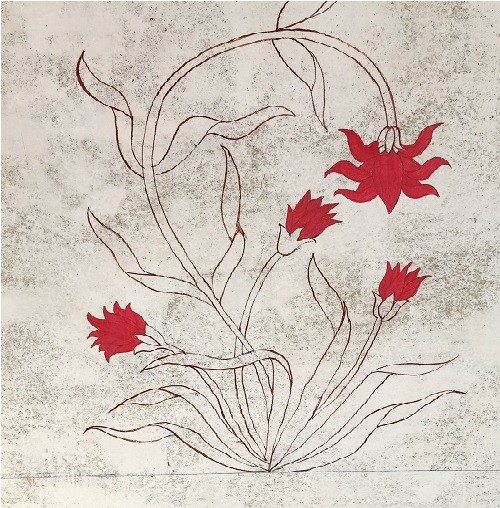
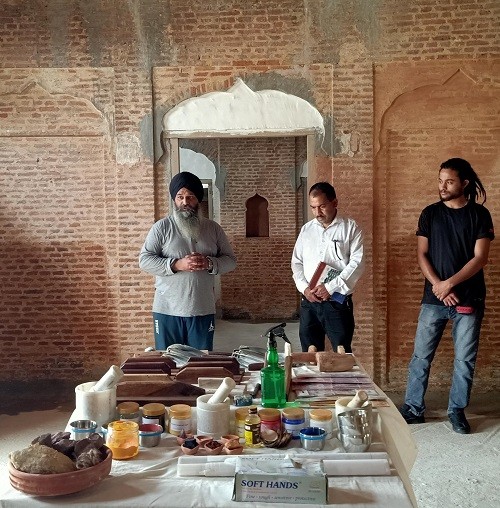
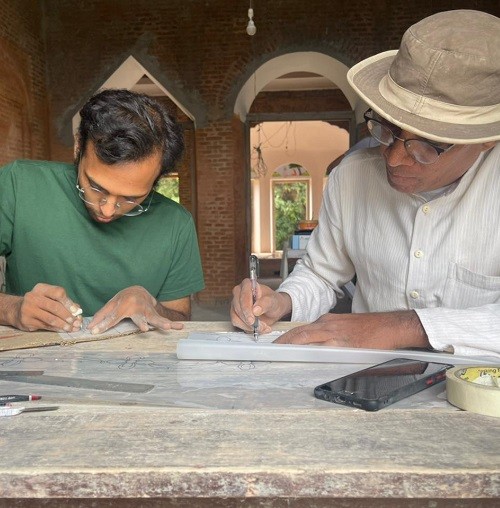
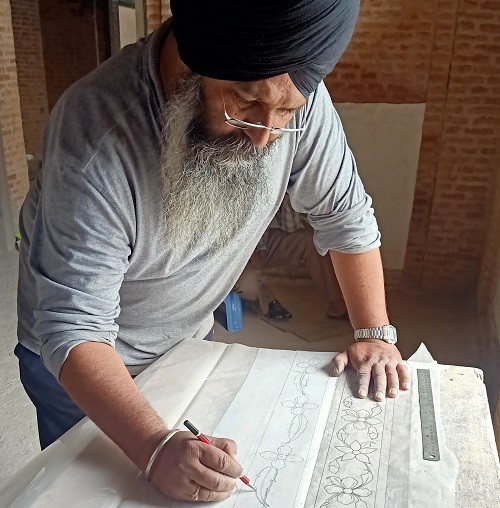
Made from natural mineral pigments over wet lime plaster, the stone pigments in water based medium are carried inside the plaster where it sets as the plaster cures, resulting in extremely durable artworks able to survive thousands of years. India is home to many ancient frescos, with the oldest recorded at the Ajanta caves dating to 200 – 600BC.
This workshop is suitable for anyone interested in learning how to create long lasting fresco artworks. No prior experience is required.
Workshop Content
Practical Content
- Understanding the materials – Slaking lime, sourcing of surki (brick powder)
- Preparation and application of lime plaster base, second layer & finishing layer.
- Preparation of designs on tracing paper and transferring of designs onto finished plaster
- Preparation of mineral pigments with appropriate admixtures – gum arabic
- Technique for painting with mineral pigments on lime
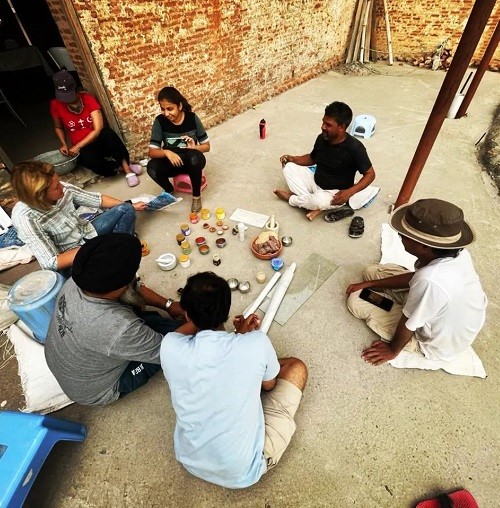
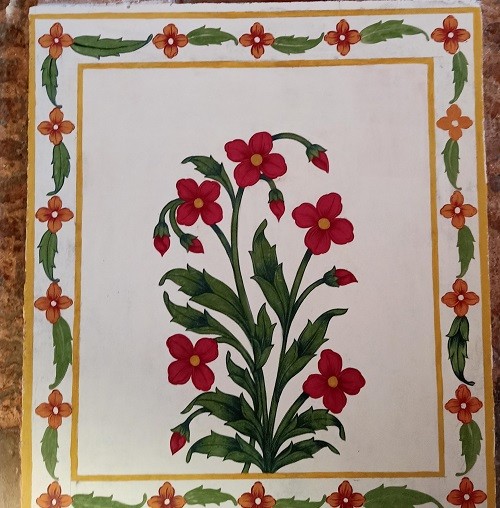
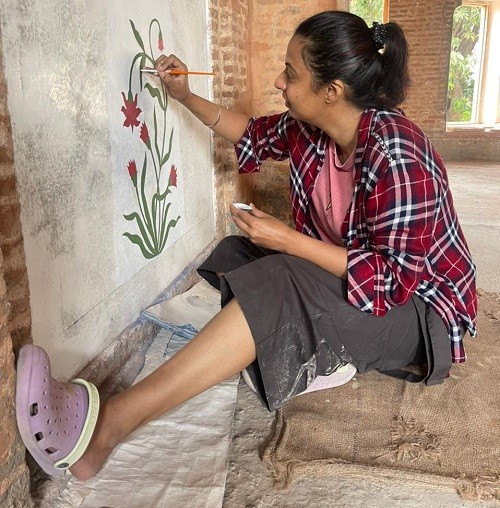
Theoretical Content
- Various types of lime
- Difference between Fresco & Secco / Tempera painting
- Characteristics of Mohrakashi aesthetics
- Kangra miniature aesthetics & the influence of Kangra School of Art on Mohrakashi.
Meet the Artist
Gurpreet Singh Mankoo
Gurpreet ji is a passionate advocate for the ongoing transmission of the Mohrakashi fresco tradition. Since 2015 he has been learning this tradition through his own research and under the guidance of Namita Jaspal, Conservator & Consultant @ Heritage Property, Chandigarh.
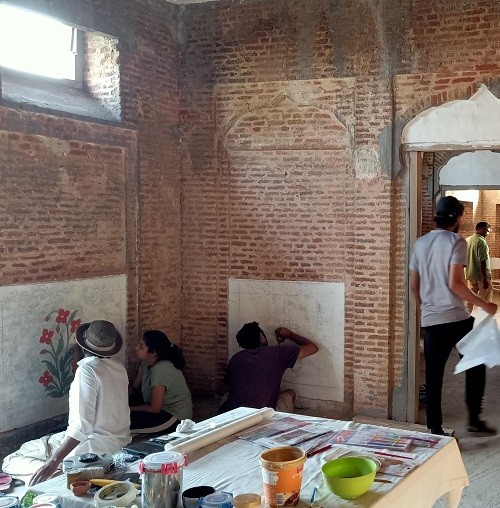
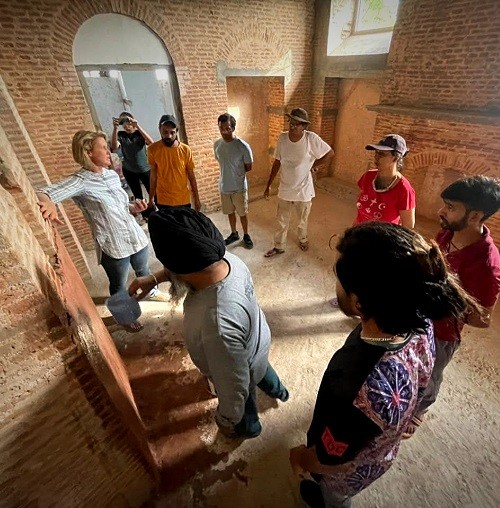
He has worked on the restoration of frescos at the Golden Temple in Amritsar, where he had the opportunity to revere and observe the strokes of the great masters works of Mohrakashi. His inclination towards Mohrakashi led him to take up restoration in 2015 for the figurative motif, on the interior walls of Krishan Mandir–UNESCO World. Heritage Site is in Village-Kishan Kot, Tehsil-Srihar, Gobindpur, District-Gurdaspur (Punjab, India). In 2015–16, he worked on the interior walls and ceiling of Gurudwara Sahib, Mansuran, Ludhiana-West (Punjab, India).
His passion for Mohrakashi saw him head south to learn the Dukshini Vijayanagar Miniature style of painting (Vijay Nagar, Bengaluru, India) under M.V. Kambar, Dukshini Vijaya Nagar Miniature Style Artist, Bengaluru (Karnataka, India).
Gurpreet ji has been spiritually inclined since a child and his reflections on the process of Mohrakashi are telling of how this art form when practiced mindfully may act as a medium for connecting one with the divine.
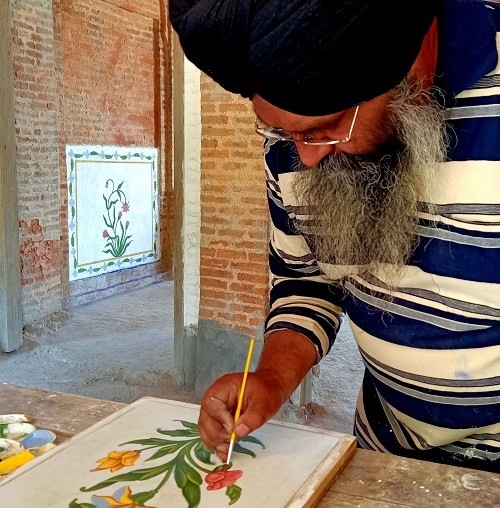
“It’s a process by which selected natural materials are united in wet stage to glorify the pattern. All ingredients in this technique are in scattered, tough and harsh in their original existence. By the process of diluting and mixing, they unite as one soul. The Lime, a prime ingredient, undergoes for a treatment with water for months to cease its inner heat and is prepared to bind with extracted pigments from stones. Artist follows this journey of uniting and binding natural materials patiently, with dedication to keep himself connected with oneness” Gurpreet Singh Mankoo
Gurpreet ji is also an experienced teacher, having shared his learnings through workshops with college students in Bangalore. Through teaching he hopes to keep this tradition alive for generations to come.
Workshop Location & Host
Nandpur Fort was built in the 19th century and was home to the Rani of Guler Kingdom. The fort is located in Nandpur village overlooking Pong Dam, Himachal Pradesh. Surrounded by extensive lawn, gardens & forest, the property provides a peaceful setting for this workshop. The nearest large town is Nagrota Suriyan and Dharamashala is just 60km away. Mr Guleria will be our host at Nandpur. He has a passion for the revival of the highly acclaimed Kangra Miniature Art that once flourished under the patronage of the Guler Kingdom. Upon restoration of the Fort he has plans to turn it in to a museum showcasing this unique regional art form.
Inclusions & Cost
Workshop Rs 12000
- 5 Days of hands on tuition from Master Artisan Gurpreet Singh Mankoo in a small group setting (max 12 participants) to ensure ample one on one attention.
- All materials
Food & Accommodation 4500/5750/7500/8750
- 3 Vegetarian meals a day plus morning & afternoon tea
- 5 Nights Camping/Dormitory/Twin Share/Twin Share AC Room
*Participants should plan to arrive on the evening of the 13th and depart on the late afternoon evening of the 18th. Stay can be extended for departure the following day at extra cost.
*Non veg will be available on request at extra cost